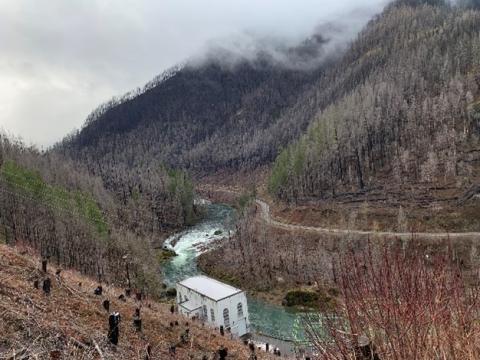
Many Pacific Northwest communities rely on forested watersheds for clean drinking water. But large, severe wildfires threaten drinking water quality and availability, or water security. Effects can persist for decades, increasing costs to communities. A multidisciplinary research team from nearly 30 organizations is helping forest and watershed managers understand and reduce the impact of wildfire on forested watersheds and drinking water systems.
About the Project
Many Pacific Northwest communities rely on forested watersheds for clean drinking water, one of many benefits that forests provide to downstream communities. However, large, severe wildfires threaten drinking water quality and availability—or water security. When watersheds burn, the potential for erosion and contamination of rivers increases, posing threats to downstream drinking water, public health, and aquatic ecosystems. Wildfire effects on watersheds and water systems can persist for decades, resulting in increased costs for communities.
Through the Wildfire and Water Security research project, a team from nearly 30 organizations is helping forest and watershed managers understand and reduce the effects of wildfire on forested watersheds and drinking water systems in the Pacific Northwest. This project involves federal, state, and local agencies, private industry partners, research institutions, and universities. These organizations contribute perspective, experience, data, site access, time, and funding with the goal of providing tools and information to support impacted communities and forest land and watershed decisionmakers.

A landslide in the Riverside Fire burn area alongside the Clackamas River, Oregon.
Wildfire and Water Security by the Numbers: